Timothy Wright reviews Meg Samuelson’s new book, Claiming the City in South African Literature, which argues that only through writing has a ‘right to the city’ has been fully realised.
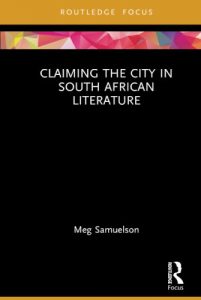
Claiming the City in South African Literature
Meg Samuelson
Routledge, 2021
When it comes to comprehensive surveys of South African literature, critics have overwhelmingly favoured the perspective of the countryside. The traditional ‘Big Three’ of South African lit—Fugard, Gordimer, Coetzee—all privileged country over city in their writing. And the South African land itself is such a potent symbol that it almost obscures anything else going in: international awards committees, for one, cannot seem to resist the stark, big-theme dramas of the African farm. The South African city, by contrast, is perceived to yield—what? A ragtag collection of stories, poems, genre fiction, occasional editorial pieces, coffee-table books, miscellaneous non-fiction—far more difficult to assemble into a discrete, single narrative, never mind one with a big, morally redemptive story arc.
Yet assemble these into a coherent and redemptive narrative arc is just what Meg Samuelson has done in this slim but wide-ranging academic study. Claiming the City is impeccably researched, draws on sophisticated theoretical models, weaves a vast and complex tapestry of texts and theories seamlessly together, and is never less than razor sharp in its analysis. It’s a very useful and much needed corrective to the rural bias, although certainly not the first work in this direction (Rob Nixon, Loren Kruger and David Attwell have all produced significant book-length studies that address aspects of South African urban literature). The central metaphor of Samuelson’s study is that of the claim, playing of course on the idea of the miner’s claim: the claim to extractive rights over land and mineral wealth. Samuelson cleverly inverts this proprietary idea of the claim: the literature of the South African city, she argues, constitutes a counter-claim on the city made by (or on behalf of) those marginalised from the city. This counter-claim is not for property or territory, but rather for ‘co-authorship of the city’ (Samuelson borrows here from the urban theorist Henri Lefebvre’s idea of the ‘right to the city’). These two different orders of claim, mineral and proprietary versus imaginative and literary, are most clearly juxtaposed in the mining city of Johannesburg. Those who physically dug up the gold that financed Joburg’s explosive growth and dazzling architecture (in styles imported from Europe and America) were also those explicitly prohibited from fully inhabiting the city, confined to labour compounds, forcibly relocated to townships, made to carry the dompas. Samuelson thus sharpens the point: given the radically uneven, heavily racialised development of South African cities, it is in fact only in literature that this ‘right to the city’ has been fully realised.
This is an arresting argument, partly because it delineates a powerful link between literature and the city, partly because it endows this literature with a purpose. Most usefully, it functions to contest the sedimented ‘Jim Comes to Joburg’ trope, in which, lured by promises of wealth and modernity, the innocent black youth arrives in the big city and is promptly corrupted. It is a story that, as many have pointed out, covertly reinforces the idea the black people belong in the countryside only. Samuelson’s broad reading of the literature shows that the early black experience of the city has always been far more polyvalent, and that black city-dwellers, far from being corrupted or disillusioned, found ways to lay claim to a city from which they were at every turn excluded. This theme is expertly followed through, if somewhat predictable in its trajectory: Drum, Staffrider, the writers of Sophiatown and District Six, the ‘trickster’ character whose very transgressivity is a sign of his heroism. These are all well-established coordinates in the story of South African literature, and Samuelson handles them deftly, even if they lack dazzling new insights.
The most compelling parts of the book are those that wander off this well-trodden territory. One of the revelatory aspects of the book is the extended focus on the under-recognised literature of early Johannesburg: Douglas Blackburn’s Leaven, RRR Dhlomo’s An African Tragedy, and, most strikingly, a lengthy discussion of the oral tradition developed by migrant labourers: songs, stories, praise-songs. This body of oratory is mustered by Samuelson to demonstrate how an indigenous literary culture comes to terms with the city. For one thing, the city, with its distance from the strict traditions of the countryside, allows for the emergence of new social types, such as the woman poet/praise-singer. For another, aspects of the city are fully incorporated into indigenous poetics: see for example the recurrent image of the train (Shosholoza!), which is the ‘all-devourer’ that empties out villages, but also a conduit along which goods, stories, and people travel, reorganising and reinvigorating the countryside.
Another virtue of this book is that it manages to escape the fetishistic orbit of Johannesburg. In her forays into Pretoria, Cape Town, Port Elizabeth and Kimberley, Samuelson assembles an unexpected variety of city texts, among them Fugard’s Boesman and Lena, Coetzee’s Life & Times of Michael K, and Sello Duiker’s Thirteen Cents. Given his obsession with the pastoral genre and his minimalist aesthetics, Coetzee is a particularly surprising appearance here. But his vision of the city is powerful and worth thinking about. In Life & Times, the city is seen as a fortress, its ramparts ‘detaching from the time of war and marching into a future in which they will construct new enclosures’: that is, it is not just a hub of commerce and people, but a self-replicating model of enclosure. This mid-nineteen-eighties vision of the city has in many ways turned out to be prophetic of contemporary South Africa. Equally haunting is the image, in Duiker’s Thirteen Cents, of the protagonist’s drug-induced vision of a T-Rex rampaging through Cape Town, reducing the concrete structures of this hyper-commodified city to rubble. Here Samuelson suggests that Cape Town becomes legible not only as a site of the racial violence, but as part of the Anthropocene: the era of the human alteration of the earth’s atmosphere and geology, which is ‘rendering the planet itself as uninhabitable as the city’.
A question any study like this must answer is what happens after 1994. On the one hand, with the release of democratic energies a huge burden of expectation is brought to bear on the city; on the other hand, the city’s pathological divisions into zones of exclusivity and precarity if anything harden and deepen. The book is at its best in this final section, where a wide range of literary forms and modes proliferate: the black comedy of Marlene van Niekerk’s Triomf and Zakes Mda’s Ways of Dying; the wry postmodernism of Ivan Vladislavić; the explosion of speculative fiction. Samuelson insightfully notes the ‘chiaroscuro’ effect in much of this writing as it grapples with the contradictory extremes of the post-apartheid city. There is in many writers a covert anxiety about the loss of the white city, as in Vladislavić’s concern with the shift from a European-style city (wealth in the centre) to an American-style city (wealth in the suburbs). Also prevalent are critiques of the conscription of the city into networks of global capitalism, most evident in Lauren Beukes’s Moxyland and Zoo City, and in Niq Mhlongo’s focus on hustling and surviving in the urban jungle, his characters playing the system in order to avoid being swallowed by it. (Excellent use is made here of Zygmunt Bauman’s concept of ‘liquid modernity,’ in which global capital invades and captures public spaces, creating enclaves of consumption).
But Samuelson’s major argument about the post-1994 period revolves around HIV, which becomes not just a central phenomenon of urban life, but also a figure for the ‘dis-ease’ of the post-apartheid city. For Samuelson, HIV forces a reorientation of the individualising energies of free-market capitalism toward ideas of care and interdependency, an ethos of ‘living with’. This seems to be what holds together the disparate fragments of post-apartheid literature, what connects Phaswane Mpe’s Welcome to Our Hillbrow with a book as different as Beukes’s Zoo City (the ‘aposymbiots’ of the latter are, Samuelson notes, images of mutual care). The seemingly negative is thus revealed to contain a hidden positive; the dysfunctional South African city is revealed to in fact display models of creativity and networks of community; the ‘slum’ is in fact an ‘enabling assemblage’, as opposed to the alienated metropolis Georg Simmel saw in the early twentieth century European city. ‘If the city is typically conceived of as the centre of individual rights,’ argues Samuelson in the concluding pages, the claim that this new genre of HIV-inflected texts articulates is ‘one that emphasises instead community, mutuality, responsibility and care.’
This is a powerful conceptual move that directs our attention to the potentials of the city without denying its pathologies. It also usefully locates South African cities on the global map, not as backward outliers, but rather as paradigmatic of how the twenty-first century city works. And yet, there is something about this overarching narrative that seems too … ‘straight’. So: literature critiques the citadelised, individualistic, capitalistic, exploited city and instead finds ways to affirm or enact networks of collectivity and care. One can’t object to the sentiment. Yet to what extent, I wonder, is this closing invocation a wishful attempt to contain the more anarchic and amoral energies of the South African city? One gets the feeling that everything has been scrupulously brought into line under this primary moral argument: very few works come under fire or are seen to be deviating from this sacred purpose. The desire to force the city into a moral register can tire, and the book can at times read like an extended encyclopaedia entry, in which each text is scrupulously ticked off on the register of approbation while its deviant particularities are left undeveloped. When Samuelson writes of graffiti as ‘claiming participatory power to shape what the city means and how it functions’, I wondered to myself how this describes the graffiti artists flown in by gentrifying corporations to brand their urban products, clearly directed at feeding the urban nostalgia of the suburban middle classes. I wondered also to what degree Beukes’s shrewdly marketed brand of ‘urban noir’ is part of the very landscape that it purports to critique. The book never quite reconciles its desire to make the city ‘good’, to invest it with moral direction (see the repeated invocations of Mandela), and the anarchic waywardness of the South African city itself, with its perverse energies and—particularly in the case of Johannesburg—its irremediable strangeness.
As I was mulling this over, a posthumously published Herman Charles Bosman sketch came to mind. It is Christmas Eve in Johannesburg, circa nineteen-thirty. Two young white Afrikaans men prowl the city looking for romance. When one of them is fobbed off by a young woman, he wonders whether it is his Afrikaner ‘racial inferiority’ working against him. Meanwhile, a young black baker’s assistant cautiously creeps home through the city in the early hours of the morning. He is almost home when he is waylaid by a gang of white revellers who chase him down and beat him savagely. Staggering back, bruised and humiliated, he comes across a white man who has passed out drunk in the street. Unzipping his trousers, he urinates on him. This story too is about claims on the city: the claims of Afrikaners who see the city as English, the claims of a woman on a city that is overwhelmingly male, and the counter-claim of the black man who must fend for his very life in this city owned and run by white people. There is little in the way of moral direction in the anarchic energies of this story. I wondered, as I read Samuelson’s study: where is this anarchic weirdness of the South African city, this chaos of contradictory and conflictual claims that cannot quite be pulled into any order?
- Timothy Wright is an Assistant Professor of English Literature at Bilkent University, Ankara, and a Research Associate at WiSER.

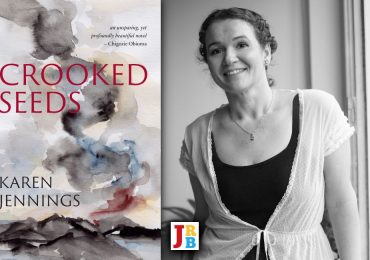
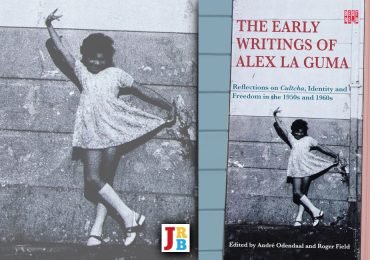

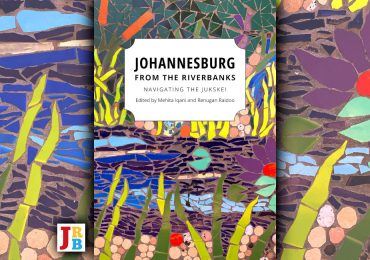
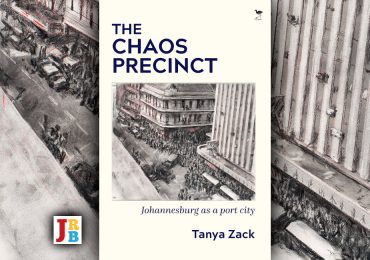
Timothy Wright may have a point about the rural bias in SA literary criticism but Meg Samuelson is not the first critic to write about urban writing in South Africa. Indeed she borrows textual choices (Mda, Mpe, Vladislavic, Van Niekerk) from others including my book IMAGINING THE EDGY CITY (Oxford University Press 2013). Wright may be based in Turkey but as a guest at Wits, should also be aware of the work of MIchael Titlestad on writing in Johannesburg as well as the dozens of writers on Johannesburg architecture, design, and urban space: C. Chipkin, L. Bremner, B. Malcomess, K. Gurney, A-M Simone, to mention just a few
I’m also struggling a bit with this: my sense is that – in black SA fiction, at any rate – since the 1950s there has been more focus on the cities & townships, on city life, than on the rural?
Just to be clear, Wright does mention Loren Kruger and certain others’ work in his review (see 2nd paragraph), though admittedly it’s not a comprehensive list.
Loren and Kelwyn: thanks for your comments. Let me just clarify what I was trying to do. I’m well aware of the fascinating and eclectic tradition of ‘Joburg Books’ that Loren mentions, which one could trace back to Vladislavic and Judin’s 1994 Blank___: Architecture, Apartheid, and After and Clive Chipkin’s 1993 Johannesburg Style. This tradition, as I see it, is fundamentally concerned with the spatial and historical particularities of Johannesburg as a unique space functioning as an *alternative* imaginary to that of the South African nation. My sense is that Samuelson is doing something quite different, namely, trying to assemble a national literature out of a range of urban writing not restricted to Johannesburg. Hence my choice to frame the review in terms of broad questions of what ‘South African literature’ is and how it has been canonised. (Indeed, Loren, your comment leads me to think that Samuelson might have considered these ‘Joburg Books’ – with their creative hybridisations of art history, architecture, and urban studies – as themselves a unique post-apartheid genre engaged in ‘claiming the city.’) I’m also familiar with much of the academic scholarship on urban writing in South Africa. Samuelson’s study is, alongside Loren’s, one of the first *book-length* interventions into this field, and, as I suggested, makes the kind of bold claims to a national literature that previous scholarship has been reticent about. Kelwyn, I agree that black writing has been predominantly concerned with the city for many decades now. In my desire to focus on the new ground Samuelson covers, I perhaps neglected to be explicit enough about this. My larger point, though, is that canonical conceptions of a national South African literature have tended to squeeze out much urban (and by extension much black) writing. This is where I think the value of Samuelson’s book lies.